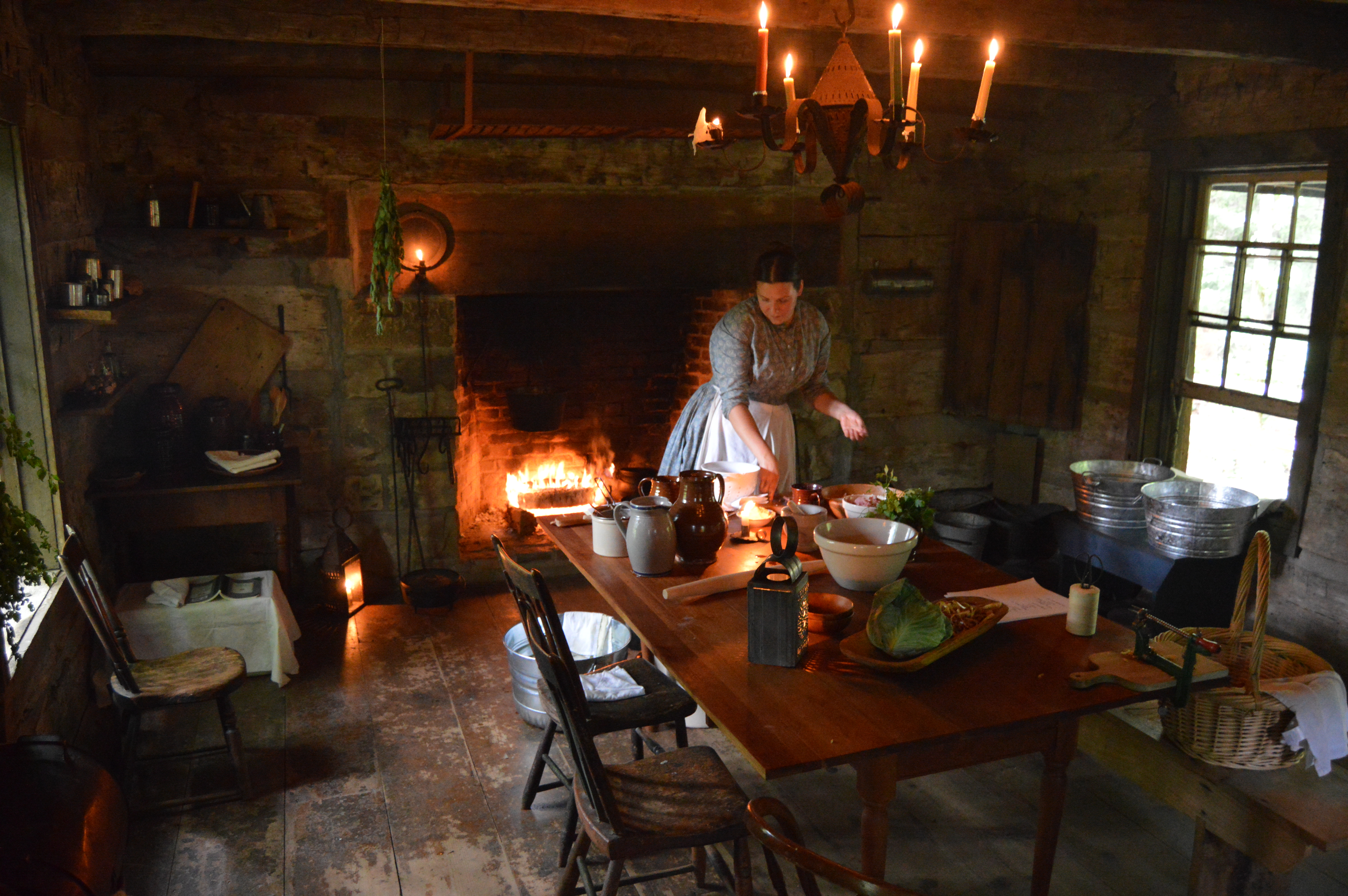It’s impossible to encapsulate all of America’s history in only a few prepared dishes. By examining changes in taste through recipes published in cookery books, however, we gain a sense of how American cuisine emerged and evolved from the 18th century to the present. Increased immigration, a rising middle class, and improvements to roads and shipping all influenced what appeared on the American dinner plate.

Chicken Fricassee
Considered by some as the ultimate comfort dish, it was said that chicken fricassee was one of the few dishes that could tempt Abraham Lincoln. Martha Washington’s cookbook included instructions on how to “frykacy” chicken. Fricassee is a method of cooking rather than a specific recipe. Early instructions on how to fricassee can be found in medieval French cooking manuscripts. The etymology of “fricassee” is believed to be “to fry” and “in pieces.” Most techniques in American cooking texts include cutting the meat into pieces, frying in fat, then finishing in liquid. Most common fricassees are served with a white sauce made from the braising liquid and are enriched with cream, butter and sometimes wine. Brown and red versions exist. Recipes to fricassee, however, vary wildly. Some add onion, others don’t. Mushrooms are sometimes mentioned. In one recipe, dumplings are added. One recipe to fricassee small pigeons calls to garnish the final dish with fried bacon and oysters. Yet another suggests serving with forcemeat balls.

Forcemeat
Forcemeat is where this culinary inquiry began. In casual conversation with a colleague, I referred to the first time I made Hannah Glasse’s forcemeat recipe for cucumbers. Force, or farce, means to stuff, and forcemeat is the stuff with which you stuff. Forcemeat can be anything. No “meat” is required. The most common forcemeat we eat today is stuffing and bulk sausage, which illustrates how widely forcemeat can differ. The flavorings for specific periods tend to be similar, however. Glasse and her contemporaries used nutmeg, mace, lemon, and parsley as their main seasonings. Late 19th century recipes, on the other hand, call for sage, celery, and onion. These recipes resemble our stuffing and sausage. Interestingly, Amelia Simmons, who is credited with publishing the first American cookbook in 1796, said sage is “not generally approved” as a seasoning.

Dessert
Though sweet dishes might not be a regular part of the 18th and 19th century middle and lower class dining table, when occasion called for it, a sweet dessert would certainly be made. The major difference in most sweet dishes, such as a simple rice pudding, is the flavoring. Typical flavoring today for sweets is vanilla, but vanilla was rare before the mid-19th century and therefore expensive. Instead, rosewater was commonly used in everything from rice pudding to cakes. A leftover from medieval cooking, rosewater leaves a fragrant, floral characteristic and aftertaste to a dish. It remains a popular flavoring in many Middle Eastern and Asian sweets. Lemon flavor, usually produced as a tincture, was also common. Vanilla bean, when procured, could also be made into a tincture and used as a flavoring, thereby extending the use of the vanilla bean pod. It was not until the late 19th century that vanilla flavoring would be artificially produced and affordable for most cooks.

On Saturday, Aug. 12, 2017, Meadowcroft’s open hearth cooking demonstration will examine a few dishes that withstood the test of time, but how similar are they? Join us to find out.
Further Reading
One can get lost perusing old cookbooks, many available online for free, but if battling the long “s” and figuring out the modern equivalent of a gill is not for you, then historic sites and museums post recipes already adapted for modern cooks, taking the guesswork out of creating a historic meal.
Juliet Corson, “Twenty-Five Cent Dinners for Families of Six,” 1878.
Hannah Glasse, “The Art of Cookery, Made Plain and Easy,” 1747.
Harry Haff, “The Founders of American Cuisine: Seven Cookbook Authors, with Historical Recipes,” McFarland & Company, Inc., Publishers, 2011.
Karen Hess, “Martha Washington’s Booke of Cookery” Columbia University Press, 1981.
Mt. Vernon Recipes, Mount Vernon Ladies’ Association, 2017.
Sarah Lohman, “Eight Flavors, The Untold Story of American Cuisine,” Simon and Schuster, New York, NY, 2016.
Amelia Simmons, “American Cookery Or The Art of Dressing Viands, Fish, Poultry, and Vegetables,” 1796.
Sarah Kizina is an historic interpreter at Meadowcroft Rockshelter and Historic Village.

